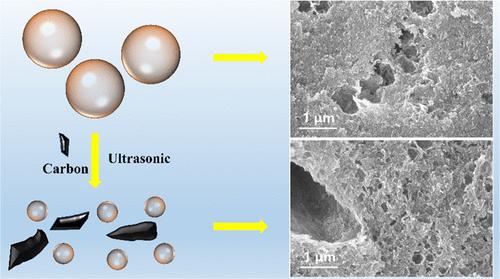Preparation of Mesoporous–Macroporous Spherical Alumina with Enhanced Hydrothermal Stability via Dual-Template Coupling Method
IF 3.9
3区 工程技术
Q2 ENGINEERING, CHEMICAL
引用次数: 0
Abstract
Maintaining an optimized pore structure of the spherical alumina support after hydrothermal treatment is crucial for catalytic efficiency, as the pore structure is intricately linked to the dispersion of catalytically active components and the diffusion of reactants. In this work, a unique mesoporous–macroporous spherical γ-Al2O3 material (γ-Al2O3-CD) with a reduced amount of surface hydroxyl groups was successfully synthesized to address pore blockages and enhance hydrothermal stability. Dodecane and hydrophilic-modified activated carbon were used as dual-template agents and, as a result, γ-Al2O3-CD exhibits a distinctive mesoporous–macroporous structure, which is beneficial for specific surface area and stability. The mercury intrusion porosimetry (MIP) specific surface area is measured to be 256 m2·g–1, with a considerable pore volume of 0.62 mL·g–1 and an impressive porosity of 58.4%. In contrast, untreated γ-Al2O3 possesses only a specific surface area of 204 m2·g–1 and a pore volume of 0.40 mL·g–1. Additionally, the abundant pore structure greatly facilitates precursor dehydration, leading to the formation of γ-Al2O3. Remarkably, the γ-Al2O3 content in γ-Al2O3-CD reaches an impressive 70.7%, with a chemical shift of μ2-OH at 1.31 ppm, resulting in a decreased number of surface hydroxyl groups and ultimately enhanced hydrothermal stability. Even after a 120 h hydrothermal treatment, the MIP specific surface area remains virtually unchanged at 255 m2·g–1.

双模板耦合法制备水热稳定性增强的介孔-大孔球形氧化铝
水热处理后保持球形氧化铝载体的优化孔结构对催化效率至关重要,因为孔结构与催化活性成分的分散和反应物的扩散有着复杂的联系。在这项工作中,成功合成了一种独特的介孔-大孔球形γ-Al2O3材料(γ-Al2O3- cd),减少了表面羟基的数量,以解决孔隙堵塞和提高水热稳定性。采用十二烷和亲水改性活性炭作为双模板剂,使γ-Al2O3-CD呈现出独特的介孔-大孔结构,有利于提高比表面积和稳定性。测得压汞孔隙比表面积(MIP)为256 m2·g-1,孔隙体积为0.62 mL·g-1,孔隙率为58.4%。相比之下,未经处理的γ-Al2O3仅具有204 m2·g-1的比表面积和0.40 mL·g-1的孔隙体积。此外,丰富的孔隙结构极大地促进了前驱体脱水,导致γ-Al2O3的形成。γ-Al2O3- cd中γ-Al2O3含量达到70.7%,μ2-OH在1.31 ppm时发生化学位移,导致表面羟基数量减少,最终提高了水热稳定性。即使经过120 h的水热处理,MIP比表面积几乎保持不变,为255 m2·g-1。
本文章由计算机程序翻译,如有差异,请以英文原文为准。
求助全文
约1分钟内获得全文
求助全文
来源期刊

Industrial & Engineering Chemistry Research
工程技术-工程:化工
CiteScore
7.40
自引率
7.10%
发文量
1467
审稿时长
2.8 months
期刊介绍:
ndustrial & Engineering Chemistry, with variations in title and format, has been published since 1909 by the American Chemical Society. Industrial & Engineering Chemistry Research is a weekly publication that reports industrial and academic research in the broad fields of applied chemistry and chemical engineering with special focus on fundamentals, processes, and products.
文献相关原料
公司名称
产品信息
阿拉丁
Nitric acid
阿拉丁
dodecane
阿拉丁
activated carbon
阿拉丁
cetyltrimethylammonium bromide (CTAB)
阿拉丁
petroleum ether
阿拉丁
ammonia
 求助内容:
求助内容: 应助结果提醒方式:
应助结果提醒方式:


